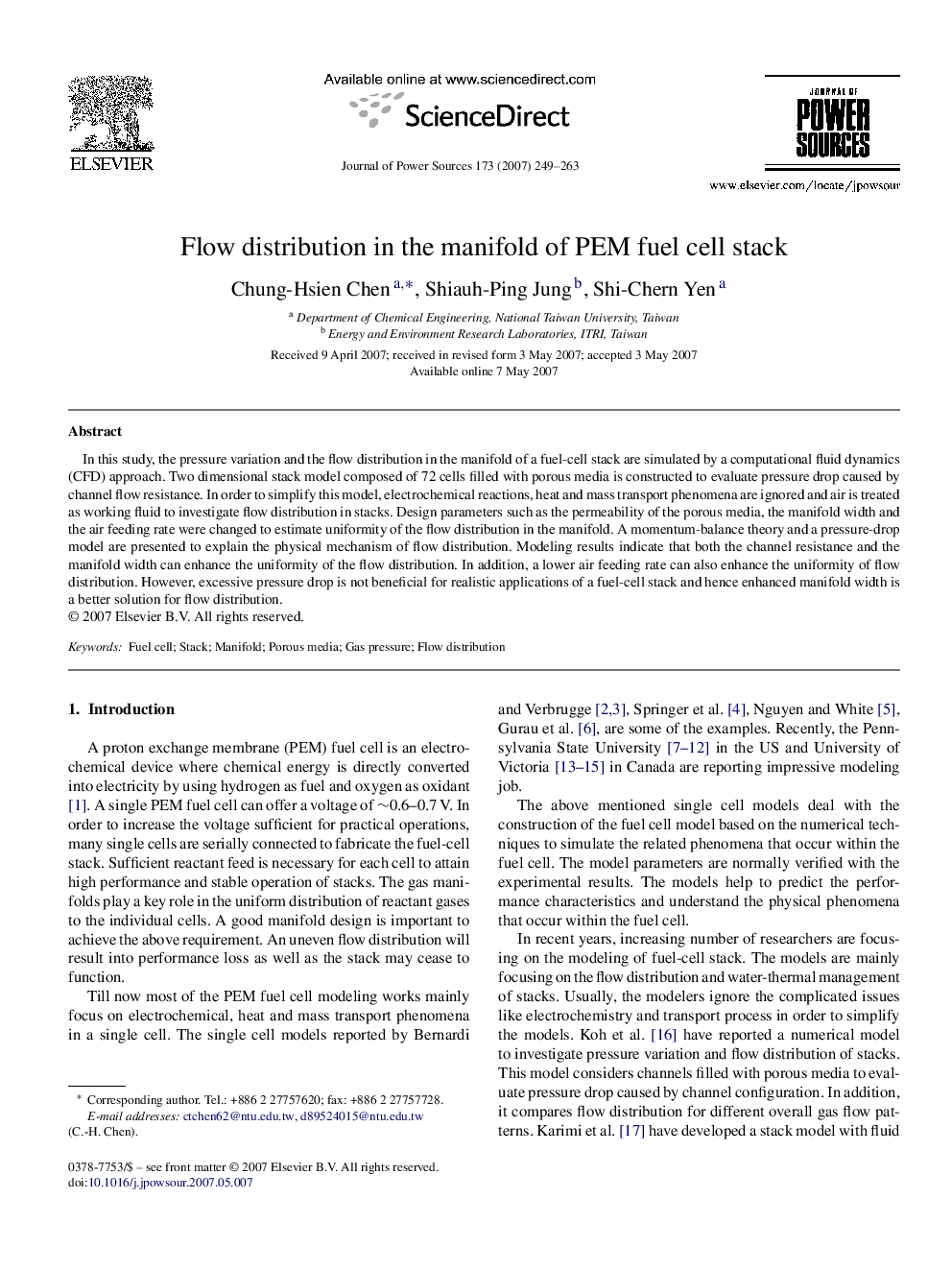| Article ID | Journal | Published Year | Pages | File Type |
|---|---|---|---|---|
| 1294893 | Journal of Power Sources | 2007 | 15 Pages |
In this study, the pressure variation and the flow distribution in the manifold of a fuel-cell stack are simulated by a computational fluid dynamics (CFD) approach. Two dimensional stack model composed of 72 cells filled with porous media is constructed to evaluate pressure drop caused by channel flow resistance. In order to simplify this model, electrochemical reactions, heat and mass transport phenomena are ignored and air is treated as working fluid to investigate flow distribution in stacks. Design parameters such as the permeability of the porous media, the manifold width and the air feeding rate were changed to estimate uniformity of the flow distribution in the manifold. A momentum-balance theory and a pressure-drop model are presented to explain the physical mechanism of flow distribution. Modeling results indicate that both the channel resistance and the manifold width can enhance the uniformity of the flow distribution. In addition, a lower air feeding rate can also enhance the uniformity of flow distribution. However, excessive pressure drop is not beneficial for realistic applications of a fuel-cell stack and hence enhanced manifold width is a better solution for flow distribution.
